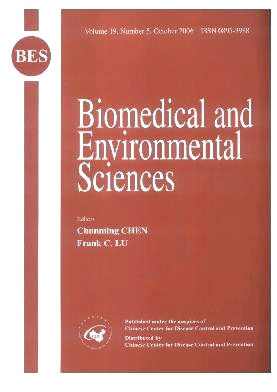Reduction of Precursors of Chlorination By-products in Drinking Water Using Fluidized-bed Biofilm Reactor at Low Temperature
-
Key words:
- Chlorination by-products /
- Low temperature /
- Drinking water /
- Fluidized-bed biofilm reactor
Abstract: Objective To investigate the reduction of chlorination by-products (CBPs) precursors using the fluidized-bed biofilm reactor (FBBR). Methods Reduction of total organic carbon (TOC), ultraviolet absorbance (UV254), trihalomethane (THM)formation potential (THMFP), haloacetic acid (HAA) formation potential (HAAFP), and ammonia in FBBR were evaluated in detail. Results The reduction of TOC or UV254 was low, on average 12.6% and 4.7%, respectively, while the reduction of THMFP and HAAFP was significant. The reduction of ammonia was 30%-40% even below 3℃, however, it could quickly rise to over 50% above 3℃. Conclusions The FBBR effectively reduces CBPs and ammonia in drinking water even at low temperature and seems to be a very promising and competitive drinking water reactor for polluted surface source waters, especially in China.
| Citation: | SHU-GUANG XIE, DONG-HUI WEN, DONG-WEN SHI, XIAO-YAN TANG. Reduction of Precursors of Chlorination By-products in Drinking Water Using Fluidized-bed Biofilm Reactor at Low Temperature[J]. Biomedical and Environmental Sciences, 2006, 19(5): 360-366. |







 Quick Links
Quick Links
 DownLoad:
DownLoad: